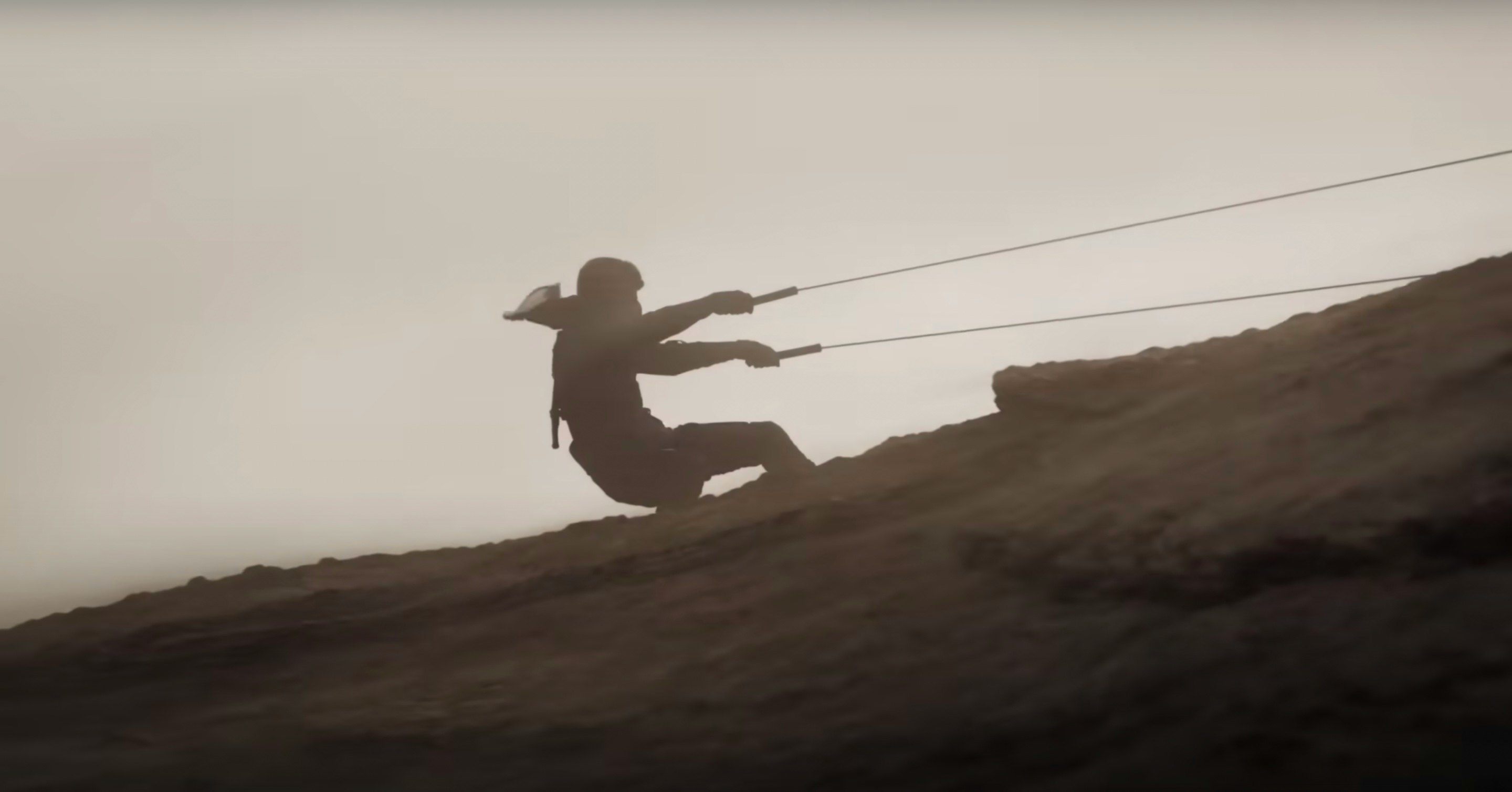
There’s a lot to be excited about in the first trailer for Dune: Part Two: the glimpses of Austin Butler’s villainous Feyd-Rautha (Austin Butler), the promise of a greater role for Florence Pugh’s intriguing Princess Irulan, and the satisfaction of finally getting to witness the action-packed second half of Paul Atreides’ (Timothée Chalemet) quest to avenge his fallen house. But easily the standout part of the Dune: Part Two trailer is the sequence in which Paul finally rides the sandworm for the first time.
The sandworms are the monstrous creatures that rule the planet Arrakis but are also the source of its most precious resource: the spice melange. They’re feared and seen as a pestilence by the Imperium houses that mine the spice on Arrakis, but are venerated by the native Fremen who live on the planet. As such, one of the most pivotal rites of passage for the Fremen is wormriding.
At the end of Dune: Part One, Paul and Lady Jessica (Rebecca Ferguson) have been warily accepted into the Fremen tribe after Paul slays Jamis in battle. The film closes with a glimpse of a wormrider in the distance, sparking inspiration in Paul. Now, we get to see Paul make his own attempt at wormriding in Dune: Part Two. And this monumental sequence sneakily sets the stage for the Dune saga’s uniquely dark twist.
In the trailer’s longest sequence, we see Paul prepare to ride the worm by summoning it with a thumper, a device that creates slow rhythmic vibrations in the sand. Interwoven throughout the trailer is a conversation between Paul and Stilgar (Javier Bardem), who advises him, “Don’t try to impress anyone. You’re brave, we all know that. Be simple, be direct. Nothing fancy.”
Obviously, Paul is a fancy boy who completely ignores Stilgar’s advice. After a thrilling sequence in which he appears to almost be thrown off the worm, Paul successfully harnesses and rides the sandworm, to the cheers of the Fremen crowd ... except for Stilgar. Instead, Stilgar appears to look at Paul with an expression that can best be described as awe, mixed with apprehension and fear. Paul’s ease at riding the sandworm seems to only confirm what Stilgar has suspected — and what the first film had been teasing — the entire time: that Paul Atreides is the prophesied Lisan al Gaib.
Dune and the Chosen One

“He shall know your ways as though born to them.”
That was part of the Fremen peoples’ prophecy for the Lisain al Ghaib, whom they believe to be their off-world prophet or messiah. It’s what Liet-Kynes utters when she sees that Paul has fitted his stillsuit like an Arrakis native without any guidance, and it’s how the Fremen people treat Paul when he arrives on the desert planet. Paul’s visions of Arrakis and its bloody future only seem to confirm he’s the Chosen One, destined to save the oppressed people of this planet. It’s the kind of tired Chosen One set-up we’ve seen in many movies before.
But the unique thing about Dune is the way it undercuts this Chosen One narrative at every turn. The Fremen only suspect that Paul is their messiah because the Bene Gesserit (a religious sisterhood with magical powers) planted the seeds of the prophecy generations before House Atreides’ arrival. The Chosen One is not decided by fate but by centuries of genetic engineering by the Bene Gesserit, who have been carefully manipulating bloodlines to create the superbeing, the Kwisatz Haderach.
The refreshing thing about Dune is that Paul is intensely aware of this and deeply resentful of being forced to be the Chosen One. The Dune: Part Two trailer even alludes to this, with a tense conversation between Lady Jessica and Paul. When Lady Jessica reasons, “We gave them something to hope for,” Paul furiously responds, “That’s not hope!”
As we see at the end of the Dune: Part Two trailer, Paul accepts his fate, commanding an army of thousands of zealous Fremen. But don’t expect this moment of triumph to indicate a happy ending. Author Frank Herbert always intended Dune to be a rejection of the Chosen One narrative, explaining, “It began with a concept: to do a long novel about the messianic convulsions which periodically inflict themselves on human societies. I had this idea that superheroes were disastrous for humans.”
Instead of the simple story of good triumphing over evil, Dune takes its Chosen One down a much more interesting path and grapples with a much more complex question: what does it take for a hero to become a villain?







